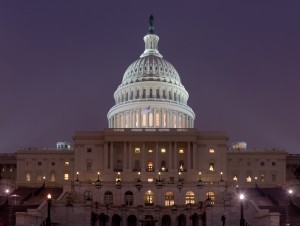From an OpEd article published in the Raleigh News and Observer on October 27, 2016:
When gas prices rise, we routinely hear about the added costs rippling through the economy, hitting consumers and companies alike with the equivalent of a “gas tax.” By that logic, shouldn’t lower gas prices mean more expendable income and higher profits, creating a generally improved economic climate and bullish markets?
Yet throughout the year we’ve seen just the opposite, with counter-intuitive headlines like, “Oil Prices Slump, Markets Follow.” Now, as those same oil prices have begun to rise, the Dow Jones Industrial Average has flirted with record-setting territory.
Is this the new normal?
Probably not. Some analysts believe that when oil prices recover, the markets will eventually decouple themselves from their attachment to “black gold.” Yet the market fluctuations do illustrate the destructive power oil price instability has on the American economy.
And the issue of volatile oil prices is unlikely to subside anytime soon.
In the utilities industry, no one energy source makes up more than a third of the electricity generated. Last year, about a third of our electricity came from coal, another third from natural gas, 20 percent from nuclear and another 13 percent or so from hydro and other renewable sources. For consumers, that means fluctuations in the costs of one fuel can be more easily offset by the diversity of sources employed by utilities.
On the other hand, the transportation sector illustrates how a lack of diversity in fuels spikes what Americans pay for their daily commute. Gasoline and diesel produced from petroleum dominate, making up a whopping 86 percent of the market; the rest comes from renewables, Compressed Natural Gas, electric vehicles, etc.
The petroleum industry doesn’t want the public, or policy makers, to focus on diversifying the market. Instead, they promise domestic drillers will simply unearth almost unlimited supplies of oil under our own soil. And, they say, awash in new oil, America’s petroleum industry will drive down the cost of gasoline.
But recent history tells us this can’t possibly be true. The past 20 months have clearly demonstrated that only OPEC has the means to shift the price of oil – higher or lower, depending on its motives.
In the fall of 2014, OPEC, led by Saudi Arabia, made the decision to flood the market with oil. Domestic drillers tried to keep up, but the price of oil – traded on international markets – dropped precipitously, causing the U.S. petroleum industry to lose hundreds of millions of dollars and shed thousands upon thousands of jobs.
The fact is that within our borders we only control less than 1 percent of the world’s proven oil reserves. The Middle East controls almost half. To make matters worse, it can cost 10 times as much to reach those U.S. reserves as compared to countries in the Middle East.
What America needs is an “all of the above” strategy when it comes to its transportation fuels. Yes to biofuels. Yes to electric vehicles. Yes to new technologies that have the promise of providing diversity to our portfolio of fuels.
Yet the powerful oil and gas lobby vehemently opposes any attempt to boost alternatives and voluntarily lessen its monopoly of the market. Ironically, they argue free-market principles should carry the day. The transportation fuels market should be unfettered, they exclaim.
There are two obvious issues with this position: First, there’s nothing “free” about their position in the transportation fuels market. According to Congress’ Joint Committee on Taxation, the U.S. oil and gas industry alone enjoys more than $4 billion in subsidies. Globally, it’s even worse.
The second issue is the suggestion that the transportation fuels market is unfettered. OPEC operates as an international cartel, making decisions as a group of nations to set production targets that influence the price of oil on global markets. Frankly, as a leader of a U.S. trade organization, if I suggested our group operate in a similar manner, I could go to jail.
The markets may sometimes react illogically to the conditions they’re presented, but policy makers don’t have to do the same. We need to change the headlines. I’d take one that reads, “Consumers and Economy Helped by Fuel Diversity.”
Zack Hamm is President of Triangle Biofuels, based in Wilson.


